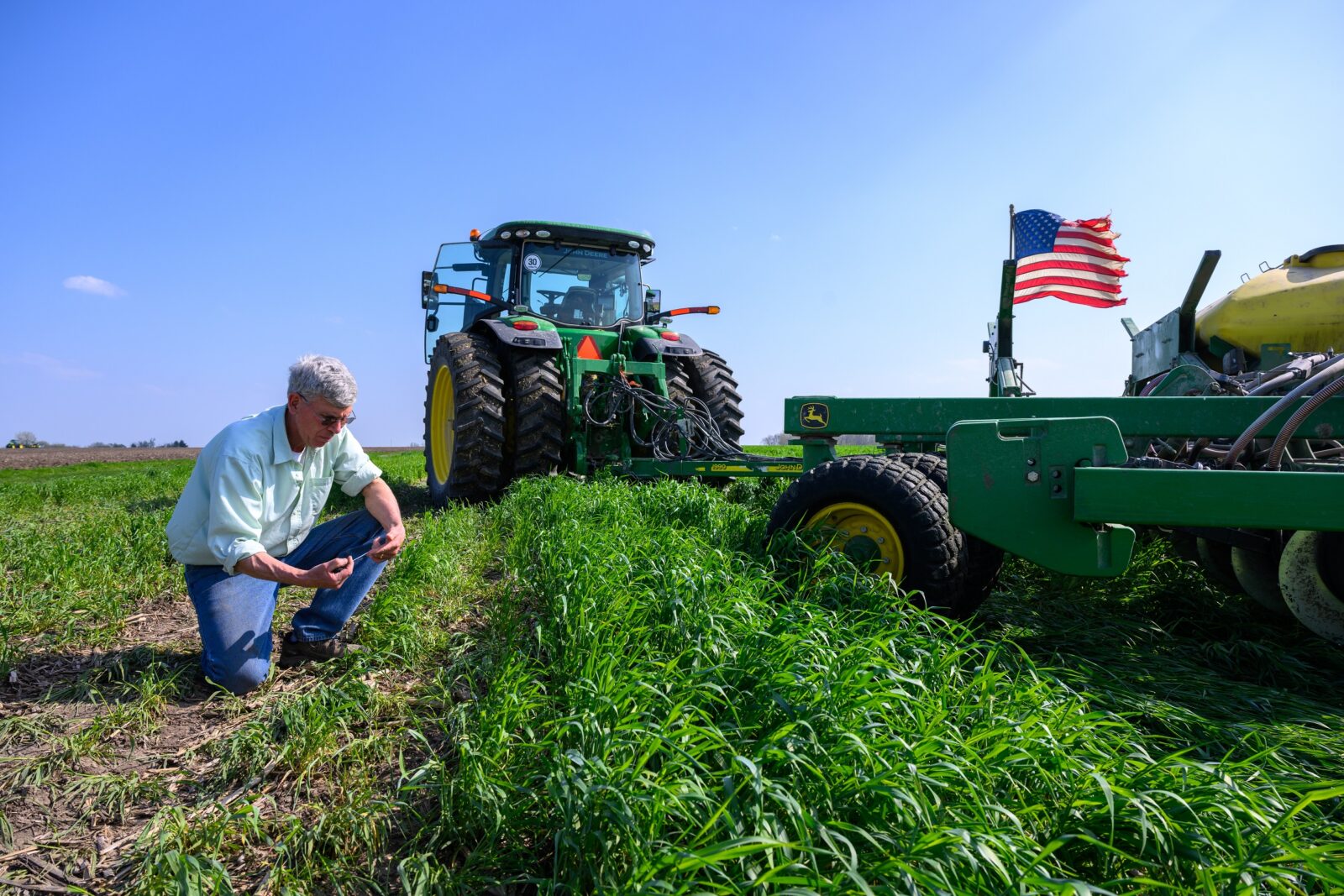Sustainability is a multi-faceted concept intricately woven into the daily considerations and practices of U.S. soybean farmers. From integrated pest management to optimized irrigation, farmers can choose many approaches to ensure the longevity of their cropland and the quality of their harvest.
Last year, the U.S. Department of Agriculture (USDA) granted over $3 billion in funding for 141 projects under the Partnerships for Climate-Smart Commodities. The funding will assist growers in implementing climate-smart production practices, evaluate their economic and environmental benefits, and develop markets that can properly value and process the commodities. These projects encompass 20-25 million acres of land and project lengths of up to five years.
One of the 141 projects encompasses a partnership between three major commodity boards focused on expanding sustainable farming practices. The United Soybean Board (USB), the National Pork Board, and the National Corn Growers Association have come together to create the Farmers for Soil Health initiative. Farmers for Soil Health is farmer led and farmer driven, with an advisory board of farmers representing these commodity boards. Their goal is to have 30 million acres of corn and soybean farmland using cover crops to improve their soil health and resiliency by 2030. Currently, about 6% of U.S. cropland uses cover crops. However, this goal is a small part of the long-term program vision.
The Farmers for Soil Health program encourages farmers to adopt and expand sustainable farming practices while still maintaining their freedom to operate. One such management practice, planting cover crops, offers many benefits to cropland, including improved soil health, water quality, and greenhouse gas sequestration. Farmers for Soil Health includes a cost-share incentive that reduces the financial risk for farmers who haven’t planted cover crops before. The program also provides technical assistance guided by the state commodity groups to help farmers succeed that are new to climate-smart practices. This state level guidance will ensure that the assistance comes from a trusted local source. This incentive program is practice-based, not outcome based, easing the burden on farmer’s verification procedures.
But Farmers for Soil Health is not just about cover crops. Another critical component of the program is the creation of a marketplace where buyers can connect directly with farms to source commodities that were grown under management practices that a buyer needs. These practices could include anything from cover crops to habitat restoration. Through the marketplace, a company alerts farmers that it wants to buy a commodity based off practices, and the farmers are free to accept, or decline based on the incentives offered. Farmers who already apply these sustainability management practices will have an advantage when the companies look for a farm to request commodities from. This connection also allows companies to act in more sustainable ways, such as by sourcing locally. Having the information on management practices offers transparency and traceability to companies which they can use to demonstrate accountability to their customers.
“Farmers for Soil Health is here to be the ultimate steward of funding, to secure national grants and deliver the funding right down to the farmer level where stewardship actually happens,” explains Jack Cornell, the Director of Sustainable Supply at the United Soybean Board. Read more about the collaboration here: farmersforsoilhealth.com.
The United Soybean Board funds soybean germplasm research to make our soybeans more sustainable to grow. This year, the soy checkoff is investing $37 million dollars in soybean research. This important germplasm research increases resiliency to abiotic and biotic stress, ensuring the sustainability of U.S. Soy in the face of changing and extreme conditions.
